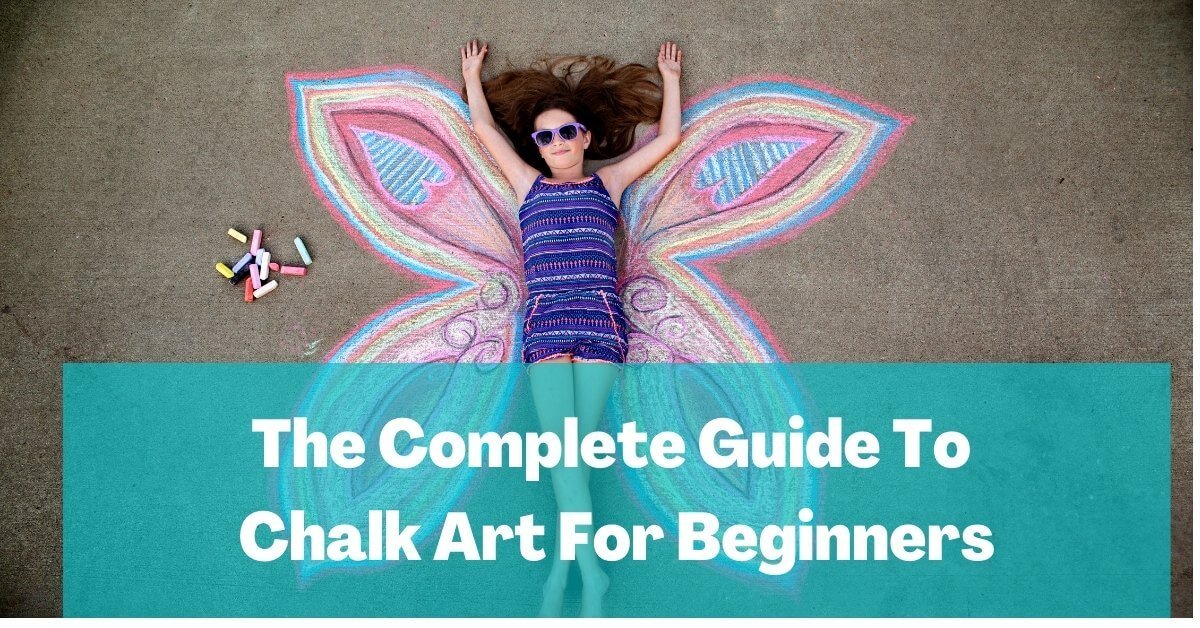I purchased my first sketchbook from the dollar store across the street from my house.
It worked for me as a beginner. It still does. I went back and bought 4 more as soon as I realized how much I liked it. It’s not an amazing quality paper by any means, but it worked.
To start, all you need is SOMETHING. Anything. Don’t let finding the right tools prevent or delay you from starting any more than it already has.
I’ve been wanting to become a better drawer for years but having the perfect sketchbook or the best pencil delayed me from what I should have started doing right away –practicing.
In the case you want to know more about drawing supplies if you become more invested in drawing, I’ve provided a quick guide below as well.
What You’ll Need:
Paper
Pencil or Pen
Pencil Sharpener
Eraser

PENCILS
Standard pencils have a wood body and a lead core that actually isn’t lead at all. It’s graphite and clay.
These pencils are categorized by 2 different scales. The numerical graphite scale and the HB graphite scale.
Remember how schools always required you to use a #2 pencil during standardized tests? Well that number actually does mean something.
THE HB GRAPHITE SCALE
The “H” designation on a pencil indicates a hard graphite core. A hard graphite core actually draws pretty light.
The “B” is used to designate the blackness of the pencil mark. It has a soft graphite core and draws pretty black.
I know, it’s a little backward to grasp at first. I typically think of light markings being soft but that’s not the case here.
A soft core uses fewer proportions of clay in the core which means more graphite is coming out onto the paper when used. Soft pencils also dull faster so keep that in mind.
H – Hard core, draws light
B – Soft core, draws black
THE NUMERICAL GRAPHITE SCALE
The higher the number, the harder the writing core. Remember, if the writing core is hard, it draws light. This scale ranges from 2 to 9.
If you’re grabbing whatever pencil you have access to, it’s most likely a 2b pencil. It will produce some soft grays and strong blacks for you. Besides the standard graphite pencils, there are a few more. Since we are just getting our toes wet with drawing, we won’t get into those here.
With pencils of different brands, you’ll really have to experiment with the ones that work for you.
JetPens has a great guide on pencil grades and even better wooden pencils if you want to learn more.
PAPER
There are three main things to really know about paper to help you choose the right one if you become invested more into drawing as a hobby.
1. PAPER TOOTH
This refers to the texture on the surface of the paper. Smoother textures will produce smoother lines when you apply the pencil to the surface.
Pencil lines on rougher texture might appear more broken.
2. PAPER WEIGHT
Paper weight expressed in grams per square meter (gsm) or in pounds (lbs). You’ll see many sketchbooks provide a paperweight (ie. 80 lbs) on the cover which actually refers to the weight of a ream of paper (500 sheets).
Additional paragraph: When selecting the right paper for your drawings, it’s essential to consider both weight and texture. A smooth surface is ideal for fine details, while a more textured paper works well for shading and depth. Red River Paper offers a variety of options, ensuring you find the perfect paper to match your artistic style and technique.
The heavier the paper might not always correlate to its thickness. It’s very possible to have a paper that has a heavier weight but actually is thinner.
3. ACID-FREE PAPER
Acid-free paper are made to minimize the damage that paper would normally take from the atmosphere. Basically, it’ll last longer.
Strathmore has an amazing guide for artist papers of all media and levels of expertise downloadable as a PDF here and Blick also has a more detailed article on paper here if you wanted to learn more.
If you don’t want to buy dollar store quality sketchbooks as I did, I’d recommend acid-free sketch paper in at least 125gsm or 80lbs if you like thicker paper. It’s a pretty cheap wood-pulp-based paper and will be adequate for the job.
ERASERS
If you’re just creatively exploring the art of drawing, any eraser will do really. Just know that a bad eraser does have the potential to ruin drawings and the can destroy the surface of the paper.
If you’re a beginner who is looking to become more invested in drawing, you should know that there are several different types of erasers.
RUBBER ERASER
You know the pink erasers usually at the end of your pencils? Yup, this is your standard and most common eraser – rubber. It uses plain ol’ friction to remove pencil markings.
It doesn’t typically tear the paper unless you are using it in a Hulk-like manner. It is recommended that you do NOT use it in a Hulk-like manner.
GUM ERASER
These are the softer version of rubber erasers. It can be used to erase markings from paper that is more sensitive to tearing. You use friction to erase but the eraser itself crumbles as you do.
This would be recommended for The Hulk if he decided to leave all the smashing and pick-up drawing as a hobby. It won’t tear the paper even with pretty aggressive rubbing.
KNEADED ERASER
These things are soft and pliable. A great stress-reliever too! It doesn’t erase your problems but damn, they sure are fun to just mold if you like fiddling with things in your hand.
You can mold them into different shapes if you need to get into smaller crevices of your drawing. This eraser lifts the graphite from the paper to remove it. Kneaded erasers also have a pretty low chance of damaging the paper since you lift instead of rub.
A downside is that these erasers can get dirty the more you use it but you can just knead that eraser to clean it up a bit. You can even wash these little guys!
VINYL/PLASTIC ERASERS
This is like the superman of erasers. It can erase pretty much everything. All magic comes with a price so as you would expect, these erasers can be pricey.
Use caution during erasing though since it can still destroy the paper if used to aggressively.
ERASILS
The jeggings of the art world. It’s an eraser in the form of a pencil. The erasers are vinyl and can be sharpened like a pencil.
It also offers some wicked, precise erasing if you are working with a more detailed piece or need to erase some nooks and crannies.
Are you sure I don’t need anything else?
Yes! This is enough to get started.
If you really want more, some optional tools including blending stumps/tortillions (to blend or smudge) or a fixative (varnish used to preserve your drawings).
We’ll be getting into colored pencils and art markers next month when we explore deeper into drawing as a hobby so stay tuned for that!
RESOURCES RECOMMENDED IN THIS GUIDE
Historyofpencils.com: Different Classifications and Types of Pencils
JetPens: Picking the Perfect Pencil Hardness Grade
JetPens: Guide to Wooden Pencils
Strathmore: Fine Arts Papers Guide (PDF)
Blick: All About Paper
Rapid Fire Art: How to Use a Blending Stump
Jackson’s Art Supplies: Fixatives are Not All the Same





